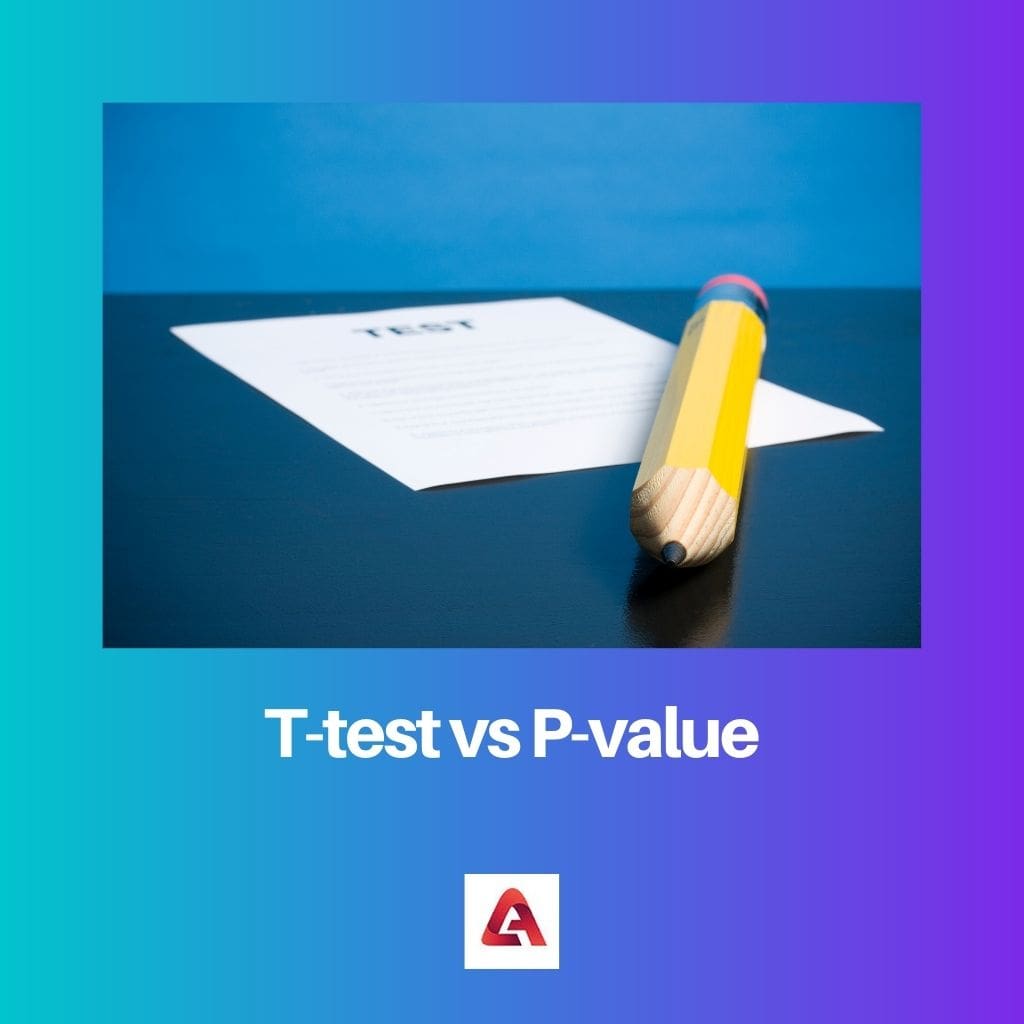In the world of statistics, calculations, assumptions, and conclusions prevail. Amongst all the tests and results, t-tests and p-value are the two most confusing assumption techniques.
While the two are found in the same subset of statistics and provide a further measure of assumption and being interlinked. The two tests are not the same!
Key Takeaways
- A t-test is a statistical test used to compare the means of two groups, while a p-value measures the evidence against a null hypothesis in hypothesis testing.
- T-tests determine if differences between groups are significant, while p-values help quantify the strength of the evidence against the null hypothesis.
- T-tests are specific to comparing means, while p-values apply to various statistical tests.
T-Test vs P-Value
The difference between T-test and P-Value is that a T-Test is used to analyze the difference rate between the means of the samples. In contrast, the p-value is performed to gain proof that can be used to negate the indifference between the averages of two pieces.

T-test provides the difference between two measures within a normal range, whereas the p-value focuses on the extreme side of the sample and thus provides a decisive result.
Despite being interrelated, the two show diverse aspects of a sample and determine different population parameters from which the models are deduced.
Comparison Table
| Parameter of Comparison | T-Test | P-Value |
|---|---|---|
| Full form | Test statistic | Probability value |
| Statistics branch | Inferential statistics | Inferential statistics |
| Hypothesis Testing | Yes | Yes |
| Averages of samples | Alternating | Null-Same |
| Result | Difference in mean | Negating Null assumptions |
What is T-Test?
A T-Test is a statistical test determining the difference rate between the averages of two related sets. It falls in the category of statistics, which relates to predictions from a population sample.
The T-test can be performed on a set of co-related data; the common feature might be age, area, service provision, or any such factor.
The three famous types of t-Tests are; paired sample model, one sample, and independent two-sample tests.
The paired sample test is when the test is conducted over the same sample at different times. This is to deduce the diverse external factors’ impact on the model.
An independent sample test is a name given; when a particular factor from the samples is taken, two sets of data from two different models are taken out.
What is P-Value?
The P-value is the assumption test used to negate that the means of two samples have no difference.
Alpha is the term used to describe a pre-determined probability. At the same time, the p-value is the term used for probability, calculated after a thorough analysis of the population and the sample.
In some instances, the same hypothesis is wrongly rejected; it is done when the null supposition is true, but as the substantial number is higher than the p-value, it is left.
If the p-value is of such a trivial nature that eventually it has to be declared that the means have no difference, then in such a case, the tests and results of the entire test are considered inconsequential.
Main Differences Between T-Test and P-Value
An ardent look shows the significant differences between T-test and P-value:
- The sample size impacts the P-value; the more significant the sample, the lower the value. While the t-value deduced from the t-test is directly proportional to the sample size, the larger the sample, the higher the value.
- The result of the t-test is said to be directly pertinent to the entire population, while in the case of p-value, this statement is not valid!
- https://amstat.tandfonline.com/doi/abs/10.1198/tast.2010.08261
- https://www.ajol.info/index.php/aipm/article/view/64038

I felt that the explanation didn’t delve deep enough. Eagerly awaiting more response.
I think the explanation was quite comprehensive already.
Sometimes it’s better not to overcomplicate technical content.
Thank you for breaking down an intricate subject in such a lucid manner.
I appreciate the thoughtful analysis in the article.
Absolutely, quality content indeed.
This article was highly informative. I’m glad I came across it.
Agreed, quality content.
Absolutely, I’m looking forward to more posts from the author.
My thoughts exactly!
Could you provide further examples than the ones listed?
I think the examples provided are already quite comprehensive.
Great read, thank you.
I found the content of this article to be very engaging.
Absolutely, it sparks further curiosity in the subject.
It’s great to see such discussions happening.
The comparison table was particularly helpful in understanding the differences.
Agreed, visuals always make complex information clearer.
The added visual depiction was indeed a very helpful component.
This article was a high-level intellectual read.
It’s always refreshing to see such in-depth discussions happening.
The concept of T-test and P-Value has never been clearer to me than after reading this article.
It’s always great to come across well-explained technical concepts.
Thanks for the informative article, it perfectly addresses the differences between T-test and P-Value.
I couldn’t have said it better. The examples provided make it easier to understand.